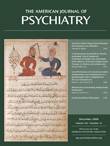Reduced Relationship to Cortical White Matter Volume Revealed by Tractography-Based Segmentation of the Corpus Callosum in Young Children With Developmental Delay
Abstract
Objective: The corpus callosum is the primary anatomical substrate for interhemispheric communication, which is important for a range of adaptive and cognitive behaviors in early development. Previous studies that have measured the corpus callosum in developmental populations have been limited by the use of rather arbitrary methods of subdividing the corpus callosum. The purpose of this study was to measure the corpus callosum in a clinical group of developmentally delayed children using a subdivision that more accurately reflected the anatomical properties of the corpus callosum. Method: The authors applied tractography to subdivide the corpus callosum into regions corresponding to the cortical regions to and from which its fibers travel in a clinical group of very young children with developmental delay, a precursor to general mental retardation, in comparison with typically developing children. Results: The data demonstrate that the midsagittal area of the entire corpus callosum is reduced in children presenting with developmental delay, reflected in the smaller area of each of the fiber-based callosal subdivisions. In addition, while the area of each subdivision was strongly and significantly correlated with the corresponding cortical white matter volume in comparison subjects, this correlation was prominently absent in the developmentally delayed group. Conclusions: A fiber-based subdivision successfully separates lobar regions of the corpus callosum, and the areas of these regions distinguish a developmentally delayed clinical group from the comparison group. This distinction was evident both in the area measurements themselves and in their correlation to the white matter volumes of the corresponding cortical lobes.



